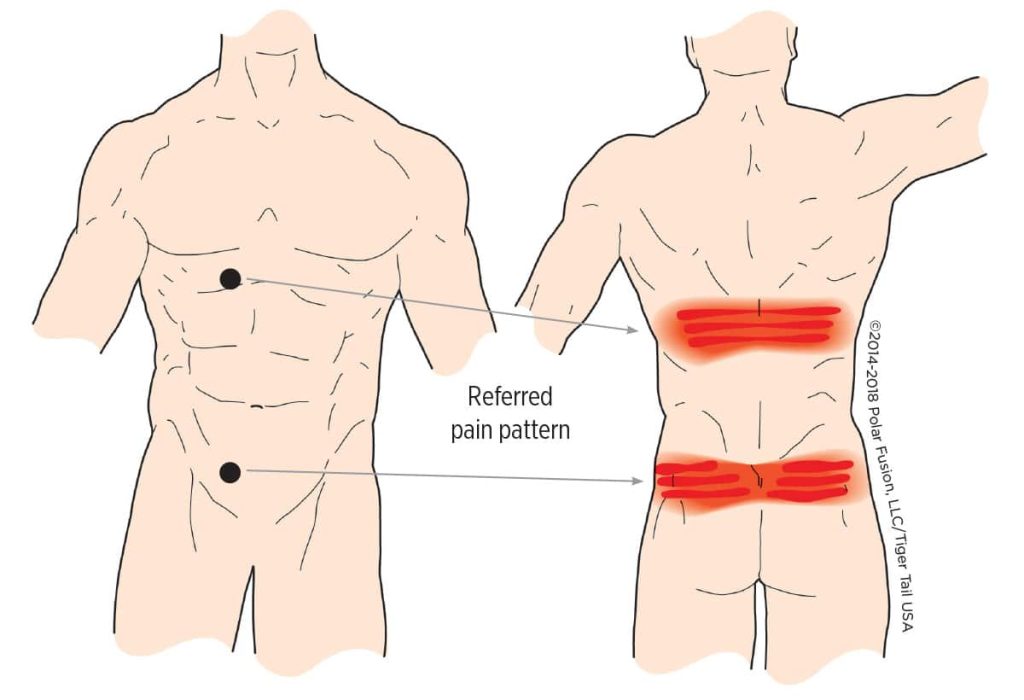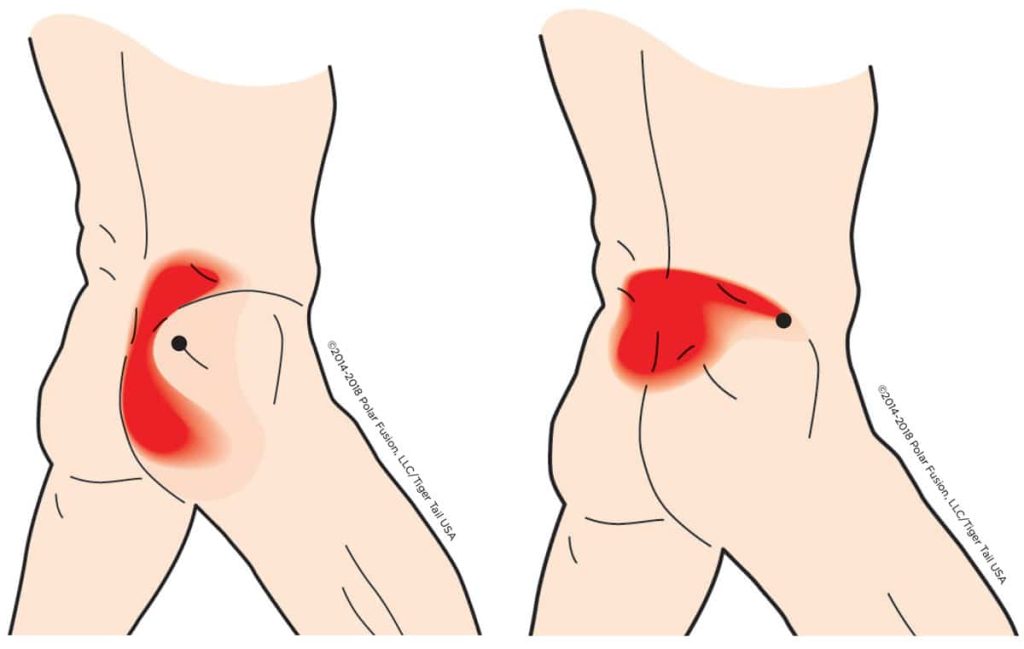
Free Shipping on $50+
Pain in the back can come from many different muscles throughout the body. Pain can be caused by knots in the lower back, upper back, and hamstring muscles. Pain patterns can also run in different directions including vertical and horizontal. Muscle knots contributing to back pain are typically located in the belly of the muscles. Back pain can stem from muscles in both the back and front of the body. Many people suffer from low back pain as a result of incorrect lifting, posture and flexibility issues. These issues can often be treated with tools made for lower back myofascial release.
Common muscle knots in the lower back, which consist of tight and contracted muscles, are indicated below by a black dot. The red area in the illustrations indicate “referred pain” – meaning, the pain you feel is often not in the location of your trigger point until you press on it. As an example, you may feel pain in the lower back, but the trigger point may actually be in the hip. For a comprehensive look at more than 260 different pain map illustrations throughout the body, you may want to purchase the Tiger Tail Self-Help Guide to HAPPY MUSCLES.

Referred pain in the lower back may originate from the Rectus Abdominis, commonly known as the “abs”.

A weak Gluteus Medius, an important hip muscle, is often associated with lower back pain.

Dr. Julie Zuleger has over 20 years of experience as a Licensed Massage Therapist, Certified Strength, and Conditioning Specialist (CSCS), Corrective Exercise Specialist, RYT-500 Yoga Instructor, and Human Movement Specialist. Julie promotes self-care using massage tools and stretching-based programs and teaches continuing education courses for yoga teachers, massage therapists, athletic trainers, strength and conditioning, fitness, and wellness professionals. Julie holds a PhD in Education and is the Director of Kinesiology and Education at Tiger Tail USA.